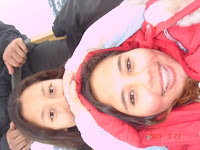In unit 1 we were introduced to derived units and in unit 2 we learned how derived units are used in real world situations. We learned how derived units, which are units based upon a set of units, are used in calculations. Mainly, we dealt with distance (m), time (sec) and average speed/velocity (m/sec). The equation to calculate the distance, time, or average speed given two of the three variables is as follows:
distance = average speed (time)
We also learned that motion is relative to another object or space. You can not tell if something is "moving" unless you are comparing it to something else. In the video I have below, my friend diving into the pool is moving, relative to the pool's enclosing wall. The water in the pool and ocean are moving relatively fast compared to the stone walls and rocks surrounding it.
Next, we learned about vectors and scalars, which was a rather hard concept to understand. Although the two are similar, they differ by one thing; scalar is a value with magnitude (how much of something you have), where as vector is a value with magnitude AND direction.
Examples:
Scalar: Brittany ran 1 mile around the track.
Vector: Brittany ran 1 mile north.
Other key words we learned were position, distance, velocity, and displacement.
Position: where object is located
Distance: total path length
Velocity: how many meters you traveled per second
Displacement: how far from original path
Lastly, we used everything we know about vectors, scalars, displacement, time, average speed, distance, position, and used it to identify motion in a graph. Most of the graphs we went over in class were called DT graphs, or distance vs. time graphs. These graphs showed the velocity of something or the rate of how fast they were going per second.
How does all of this have to do with my video?
Well, in this video, there are three segments of the same clips of a diver, but shown differently. The first segment was sped up, meaning that the diver traveled the same length as the other segments but did it in less time. This increases the average speed, and on a distance vs. time graph, the line would have a positive velocity because the diver is going away from the starting position. The second segment was the opposite of the first, where the diver traveled backwards. If graphed, this segment would have a negative velocity because the diver is going back to the starting point opposed to going towards it. The average speed of the last two segments were the same, so the length of the line in the graph should be the same because the distance traveled per second are equal in both. The third segment is in slow motion, so it has a different velocity from the rest. It took more seconds for the diver to travel the same distance, so the rate or average speed would decrease. The velocity is not the same for all three videos. The displacement of all three videos are the same, because the diver is traveling the same distance, regardless that she is going faster, backwards, or slower.
That was a lot, but hopefully not too confusing. Feedback especially on the last paragraph would be appreciated because it is the section I am unsure of the most!







































